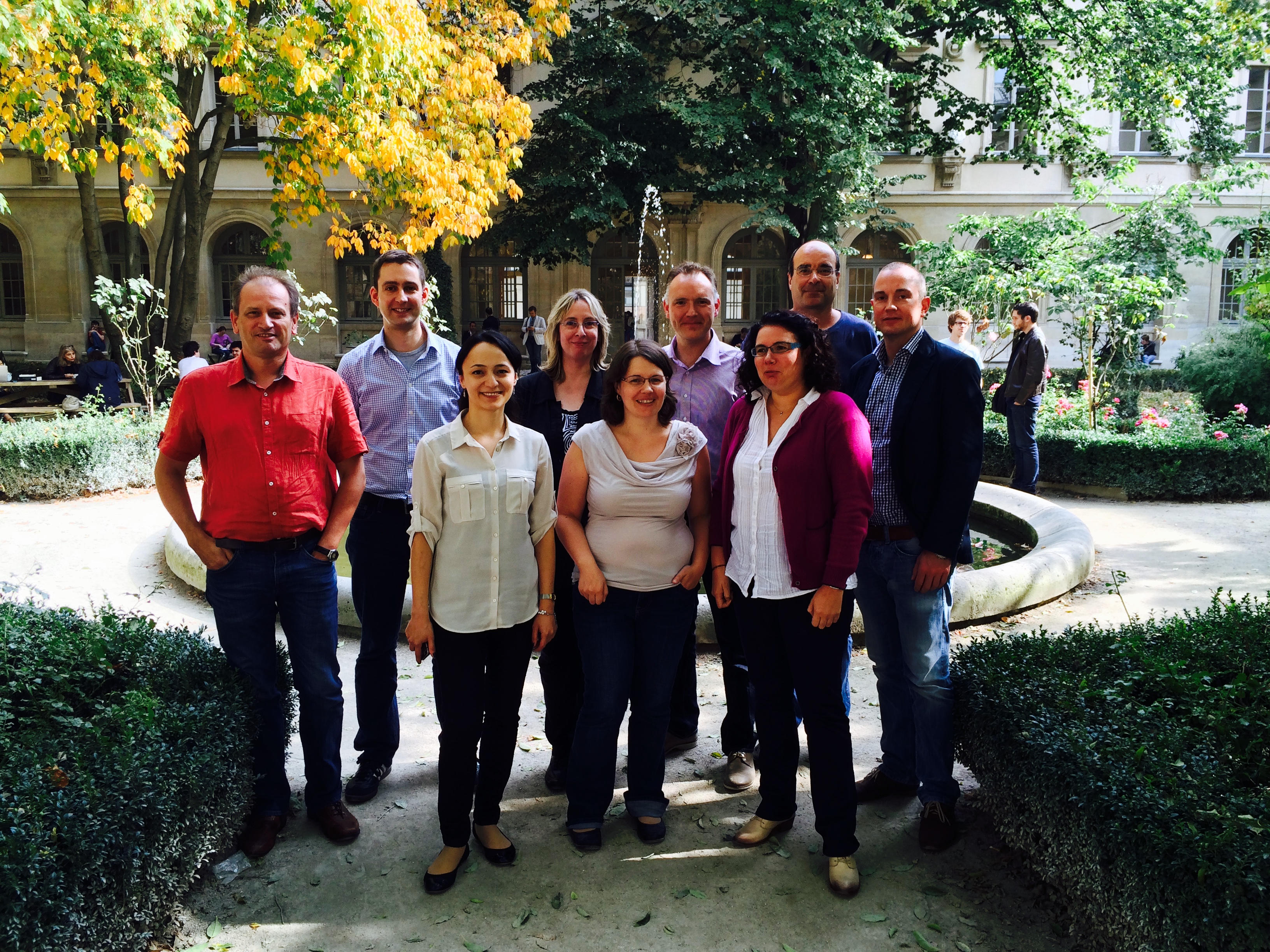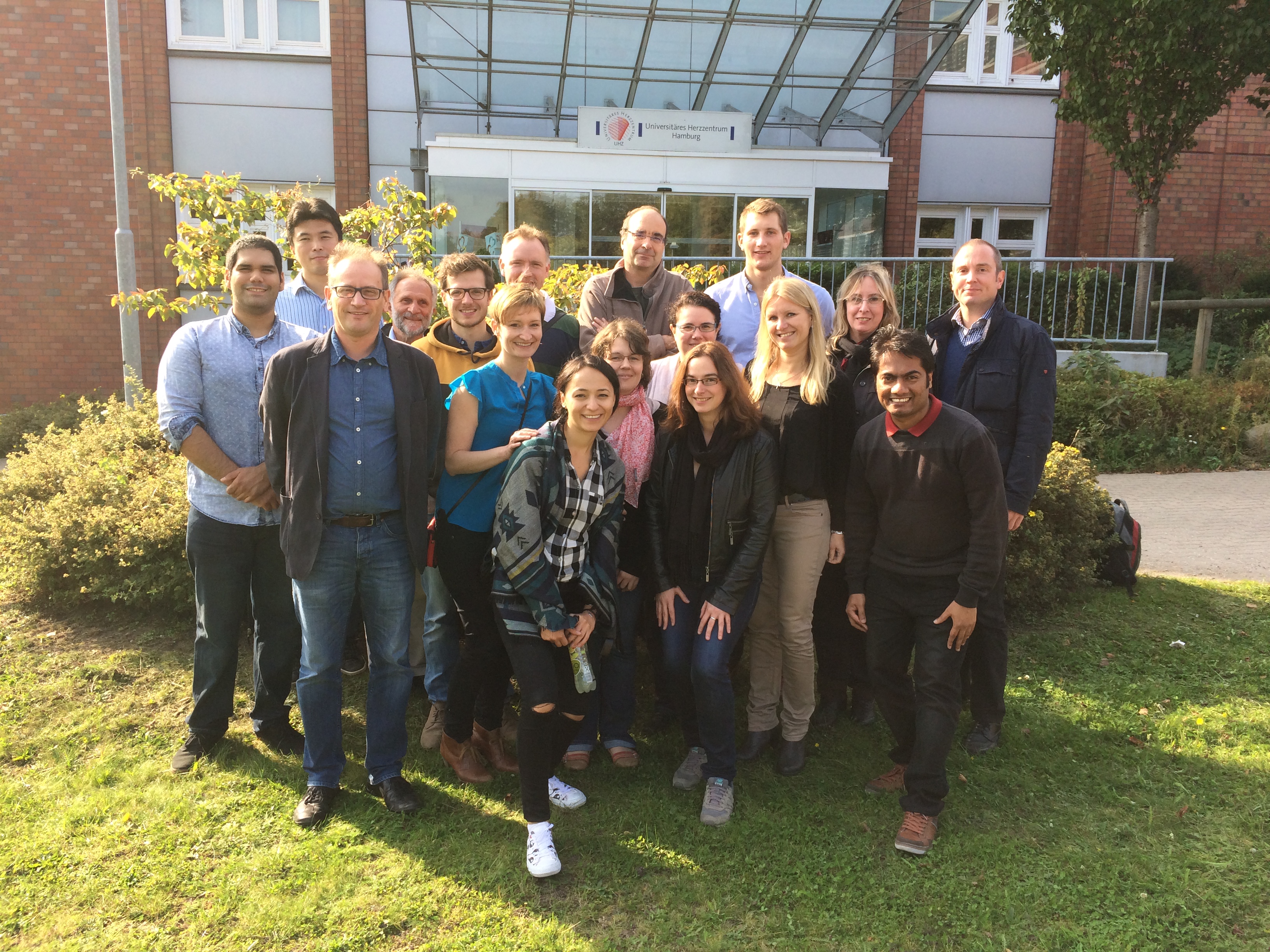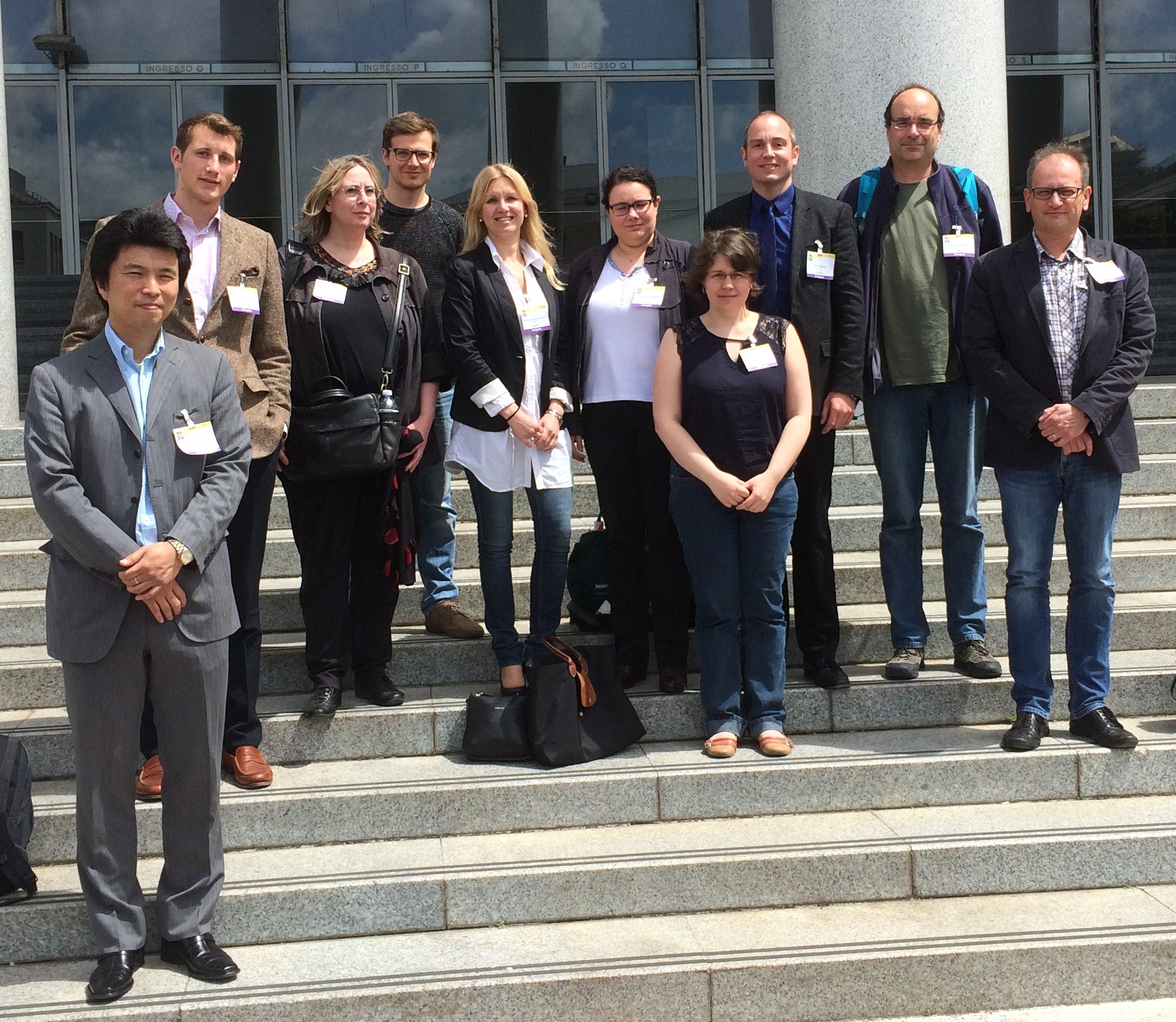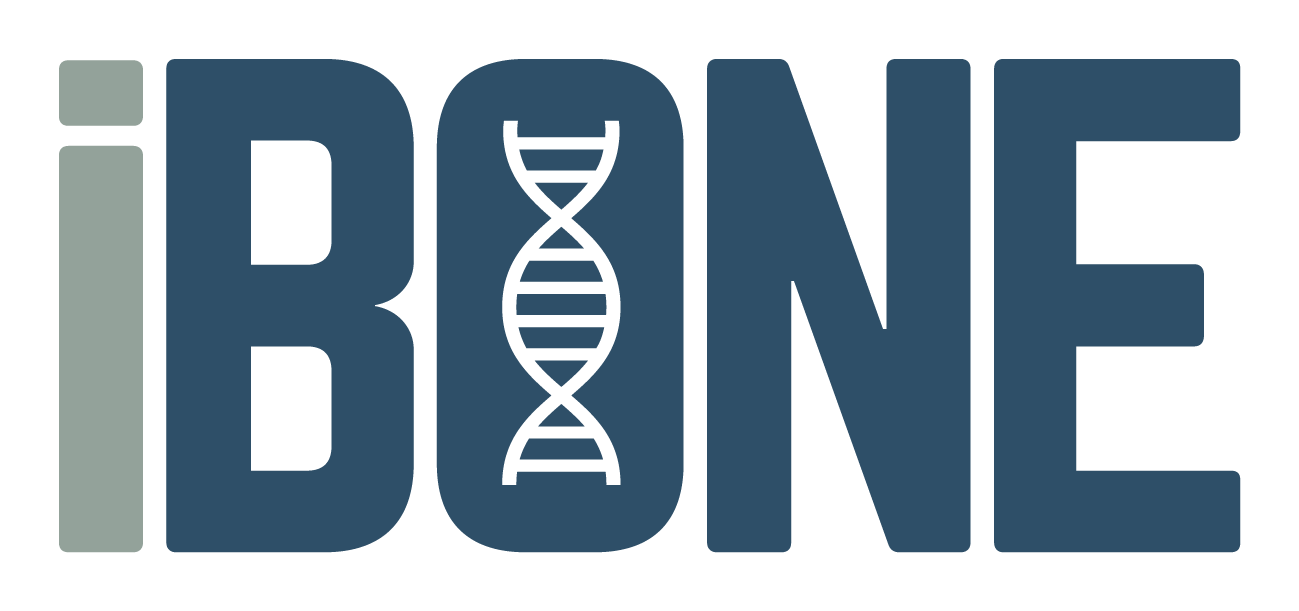
The iBone consortium 

- Scientific overview
Bone is a highly dynamic tissue that is constantly dismantled and rebuilt throughout life by the coordinated and balanced activities of matrix-resorbing osteoclasts and bone-forming osteoblasts. During aging, bone resorption often increases, while bone formation decreases, thereby reducing bone mass and bone mineral density, which often leads to osteoporosis. Aging-related bone loss affects millions of individuals, thus representing a prevailing medical and socioeconomic challenge. Since intermittent administration of Parathyroid hormone is currently the only osteoanabolic therapy available, the identification of molecular mechanisms underlying the aging-related decrease in bone formation will facilitate the development of new and more effective osteoanabolic approaches to better treat aging-related bone loss. Such therapies could stimulate the commitment of precursor cells to the osteoblast lineage, increase osteoblast differentiation, or enhance their bone-forming capacity. Recent findings suggest that extrinsic factors may influence bone homeostasis during aging via their detrimental effects on osteoblasts. While these mechanisms influencing the bone-forming capacity of osteoblasts are poorly understood, they clearly result in deregulated osteoblast gene transcription. Epigenetic regulatory proteins that post-translationally modify histone proteins or alter chromatin structure play a central role in controlling the cellular transcriptional program, and have proven to serve as effective therapeutic targets to treat a number of human diseases.
- Objectives
The goal of the iBONE consortium is to uncover and molecularly characterize epigenomic networks that control bone formation and that are altered during aging to uncover new potential targets for osteoanabolic therapy. This goal will be achieved by performing large-scale transcriptome and epigenome mapping studies on a cohort of young and aged patients carefully selected based on well-defined clinical criteria. Importantly, primary bone samples will be freshly obtained during hip replacement surgery, providing a unique source to study epigenetic modifications relevant to aging-related bone loss. In addition, studies using a novel mouse model for osteoanabolic treatment will be used to further decipher the specific epigenomic changes responsible for a decreased osteoblast osteoanabolic activity during aging. These patient and in vivo mouse model studies will be complemented by an unbiased cell-based screen, which will help to identify the epigenetic regulators that direct the dynamic aging-associated changes in the transcriptome and epigenome. The integration of these different dataset using novel bioinformatic tools and approaches will enable us to uncover important osteoanabolic epigenetically controlled gene networks. It is the vision of the iBONE consortium to use the information gained during this funding period as a basis for developing new epigenetically based osteoanabolic treatments for aging-related bone loss.
- Source of funding
The iBone consortium is funded within the framework of a specific call to study epigenomics in aging diseases. German partners are supported by the Bundesministerium für Bildung und Forschung
(BMBF) and French partners are supported by the
Agence Nationale de la Recherche (ANR) funding body.
Members of the consortium




Activity report
- Consortium meetings

29th september 2014: Kick-off meeting in Paris
List of participants:
Inserm U1132, Paris
Valérie Geoffroy,
Pierre Marie
Carole Le Henaff
Frederic Jehan
University Medical Center Göttingen
Steven Johnsen
Zeynab Najafova
University Medical Center Hamburg-Eppendorf
Eric Hesse
Andreas Gasser
IBENS, Paris
Morgane Thomas-Chollier
Denis Thieffry
Céline Hernandez
Auguste Genovesio

4-5th october 2015: meeting in Hamburg
List of participants:
Inserm U1132, Paris
Valérie Geoffroy,
Carole Le Henaff
Frederic Jehan
University Medical Center Göttingen
Steven Johnsen
Zeynab Najafova
Tareq Hossan
Simon Baumgart
University Medical Center Hamburg-Eppendorf
Eric Hesse
Hiroaki Saito
Hanna Taipaleenmäki
Katharina Jähn
Carl Haasper
Matthias Ring
Roland Gessler
IBENS, Paris
Morgane Thomas-Chollier
Denis Thieffry
Céline Hernandez
Roberto Tirado Magallanes

13th May 2016: meeting in Rome (ECTS sattelite)
List of participants:
Inserm U1132, Paris
Valérie Geoffroy,
Carole Le Henaff
Frederic Jehan
University Medical Center Göttingen
Simon Baumgart
University Medical Center Hamburg-Eppendorf
Eric Hesse
Hiroaki Saito
Hanna Taipaleenmäki
Matthias Ring
IBENS, Paris
Morgane Thomas-Chollier
Denis Thieffry
- Consortium joint publications
Tareq Hossan, Sankari Nagarajan, Simon J. Baumgart, Wanhua Xie, Roberto Tirado Magallanes, Céline Hernandez, Pierre-Marie Chiaroni,
Daniela Indenbirken, Melanie Spitzner, Morgane Thomas-Chollier, Marian Grade, Denis Thieffry, Adam Grundhoff, Florian Wegwitz
and Steven A. Johnsen
The Histone Chaperone SSRP1 is Essential for Wnt Signaling Pathway Activity During Osteoblast Differentiation
STEM CELLS, 2016 in press
- Student exchanges
2014: Pierre-Marie Chiaroni (M2 student at IBENS) to Johnsen's lab
2015: Roberto Tirado Magallanes (M2 student at IBENS) to Johnsen's lab, with funding from Epigenesys
- Other activities
The iBone consortium has been invited to participate to a satellite event to the ECTS meeting in Rome (April 2016). This event will gather European consortia working on Bone.
Top figure legend: From left to right: von Kossa staining of L4 vertebra; Masson Goldner staining of trabecular bone (tibia); polarized light microscopy of trabecular bone (tibia); myosin heavy chain fiber type IHC on muscle cross section (TA), steel and Mg2Ag disc in culture media










